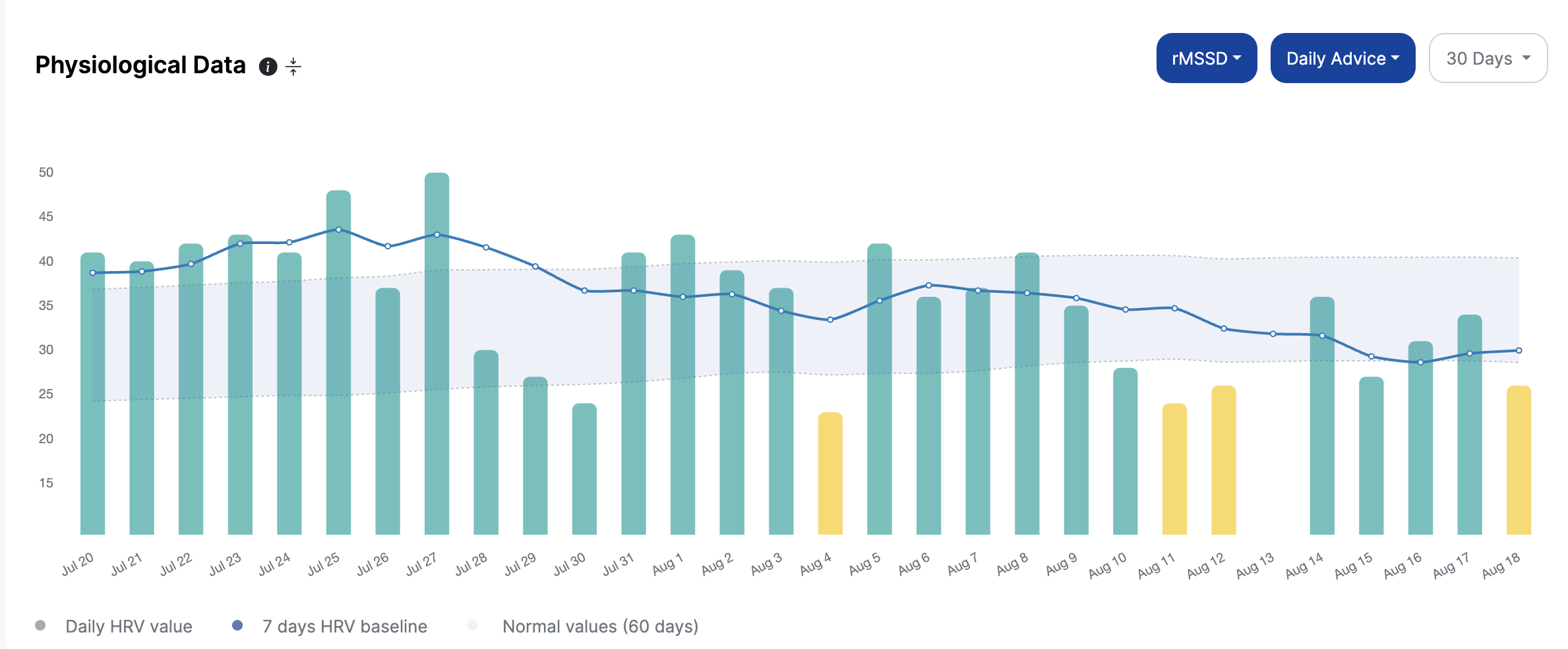Navigating Stress with Heart Rate Variability (HRV): A Path to Peak Performance

We all encounter stress, but our ability to manage it determines our trajectory. Objective measures hold the key, which is why I swear by HRV, both personally and with my clients.
Here’s a quick dive into Heart Rate Variability (HRV) – a tool that not only reveals our stress levels but empowers us to make choices for better health and performance.
Understanding HRV Heart Rate Variability
(HRV) offers a unique window into our stress and overall well-being.
It's not concerned with how much we can push through fatigue; rather, it provides insights into our body's stress resilience and health status.
HRV is an acute stress detector, flagging signs like alcohol intake, late nights, and decisions that don't align with our well-being.
Simplicity is Key
In a world where complexity and information overload are the norm, HRV offers simplicity. HRV provides a personal baseline for comparison with your subjective measures.
Wear device >> Take measurement >> View results >> Make better decisions.
Methodology for Tracking HRV
Getting started is simpler than you might think. You can gain valuable insights by dedicating less than five minutes each morning to monitoring your HRV. However, remember that HRV is not a definitive solution; it's a guiding light that leads us to the real answer – removing stressors that disrupt our HRV.
Tools I Use
- Oura ring for overnight sleep measurements and morning HRV assessment
- TrainingPeaks for tracking workout data
- HRV4Training app for a daily questionnaire and to crunch the numbers and report out
Striving for Stability
Keeping HRV within your normal range is a powerful indicator of a stable system. It's not just about chasing a number; HRV reflects vital elements like sleep quality, mood, and cravings (especially sugar). Even professional and interpersonal stress will affect the readings.
Decision Points
These fall into two areas: short and long-term.
Short Term
How will I adjust my planned work for today based on these numbers?
Training-wise, you might push off a hard session.
For work, you might adjust the start of your day to ease in, push a big work block back a day, or factor in some important midday rest.
Long Term
What factors are continuously impacting my low (or high) scores?
Training-wise, you might need to look at your consumption and sleep habits. Find one thing to toggle, and track that for a week to see if it has any effect on your trend data!
For work, you might need to adjust the start / end points of your day (to make room for life), or perhaps there's a functionally important yet stressful situation that you can work to reduce the impact of. This could be better planning, collaboration, or even outsourcing.
The Final Word
In the end, what we all seek is stability – whether in our sleep patterns, nutrition choices, or overall well-being. This stability is the platform from which you can do your best work and have the greatest impact.
